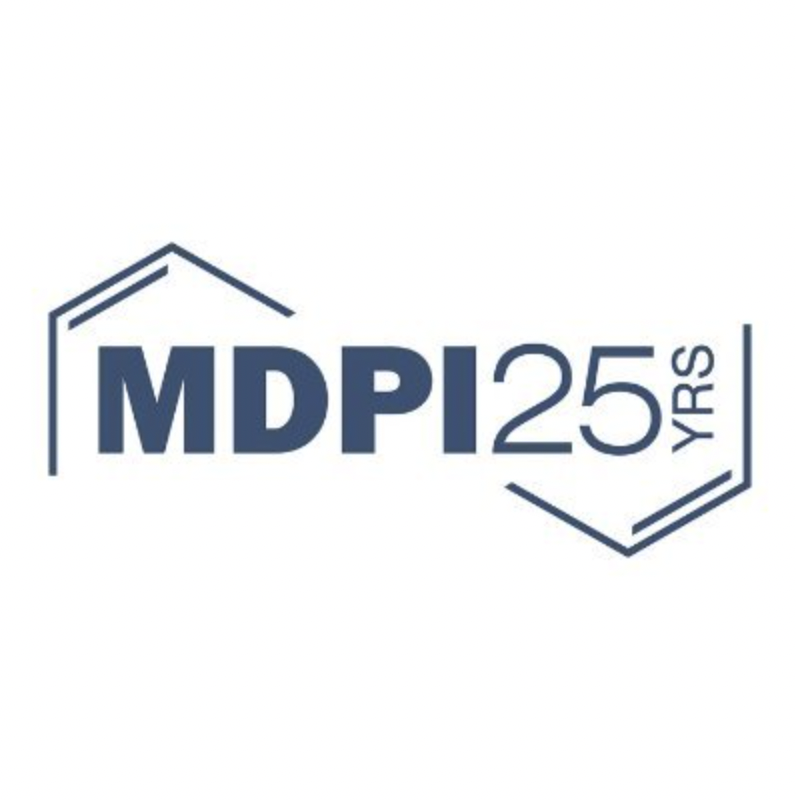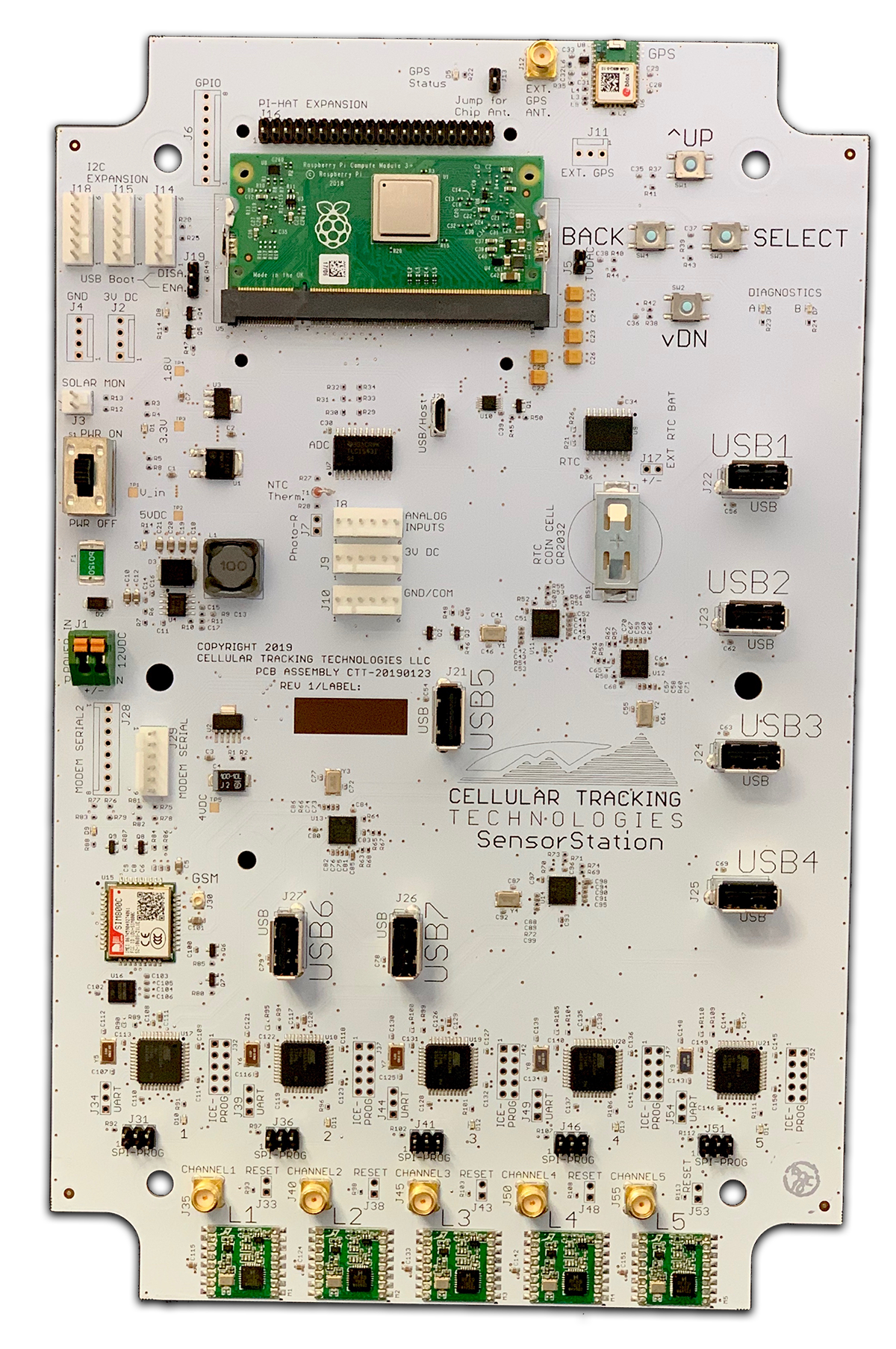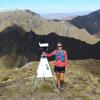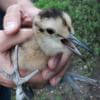Despite critical advancements in the tech solutions available to conservationists around the world, many existing tools are cost-prohibitive in the landscapes that need them most. Additionally, those who create low-cost and open-source alternatives to pricey market tech are often operating on tight budgets themselves, meaning they have limited resources for the promotion of their solutions to a wider market. We need increased communication around these solutions to highlight their availability, share lessons learned in their creation, and avoid duplication of efforts.
This group is a place to share low-cost, open-source devices for conservation; describe how they are being used, including what needs they are addressing and how they fit in to the wider conservation tech market; identify the obstacles in advancing the capacity of these technologies; and to discuss the future of these solutions - particularly their sustainability and how best to collaborate moving forward.
Header image: Shawn F. McCracken
- 0 Resources
- 6 Discussions
- 6 Groups
Wildlife technician and camera traps enthusiast
- 0 Resources
- 0 Discussions
- 5 Groups
- @ptynecki
- | Piotr
Software Engineer with 10+ years of experience in application design, development, testing and deployment. Highly experienced in Health Care, Life Science and BigData projects. Artificial Intelligence researcher (NLP, Computer Vision) with experience in Wildlife Conservation.

- 0 Resources
- 6 Discussions
- 4 Groups
- 0 Resources
- 1 Discussions
- 4 Groups
I am biologist, I have studied wild life and ethnobiology at Amazon and caimans in Brazil
- 0 Resources
- 0 Discussions
- 10 Groups


- 0 Resources
- 19 Discussions
- 18 Groups
- @taylorcasalena
- | she, her, hers
sustainability strategist | nature & climate
- 0 Resources
- 0 Discussions
- 5 Groups
Early-career movement ecologist currently working with an interdisciplinary team to develop and deploy animal-borne tracking devices with the interest of monitoring and studying the fine-scale behaviors of large carnivores, particularly in the context of human wildlife conflict
- 0 Resources
- 2 Discussions
- 10 Groups
- @frides238
- | She/her
Hi! I am Frida Ruiz, a current Mechanical Engineering undergraduate student very interested in habitat restoration & conservation. I am excited to connect with others and learn about technology applications within applied ecology & potential research opportunities
- 0 Resources
- 4 Discussions
- 13 Groups
World Wide Fund for Nature/ World Wildlife Fund (WWF)

- 0 Resources
- 12 Discussions
- 15 Groups
- 0 Resources
- 0 Discussions
- 14 Groups
Technologist, birder, photographer and mountain guide.
- 0 Resources
- 0 Discussions
- 18 Groups
Do you have photos and videos of your conservation tech work? We want to include them in a conservation technology showcase video
17 May 2024
€2,000 travel grants are available for researchers interested in insect monitoring using automated cameras and computer vision
3 May 2024
Article
Read in detail about how to use The Inventory, our new living directory of conservation technology tools, organisations, and R&D projects.
1 May 2024
Article
The Inventory is your one-stop shop for conservation technology tools, organisations, and R&D projects. Start contributing to it now!
1 May 2024
Technology to End the Sixth Mass Extinction. Salary: $132 - $160k; Location: Seattle WA; 7+ years of experience in hardware product development and manufacturing; View post for full job description
1 May 2024
Review by Professor Iain H Woodhouse
29 April 2024
Apply to the inaugural GOSH Ambassador Program by June 15!
18 April 2024
In a recent publication we tested Underwater Passive Acoustic Monitoring (UPAM) as a feasible non-invasive technique to study the calling behavior of therathened aquatic Andean frogs under natural conditions in the...
6 April 2024
Article
You’re invited to the WILDLABS Variety Hour, a monthly event that connects you to conservation tech's most exciting projects, research, and ideas. We can't wait to bring you a whole new season of speakers and...
22 March 2024
Careers
The SMART Partnership is hiring a Program Director to oversee all aspects of the partnership's operations
21 February 2024
The IQOE Task Team on Low-Cost Hydrophones for Research, Education, and Citizen Science is looking for industry partners to develop a low-cost hydrophone.
15 December 2023
Dedi Yang and co athors publiched a paper on a Raspberry Pi-based open-source, low-power camera system
1 November 2023
November 2023
event
| Description | Activity | Replies | Groups | Updated |
|---|---|---|---|---|
| I dont have anything written up but I can tell what parts we used and how we tested.Its pretty straightforward, we used this M10 Enclosure Vent from Blue Robotics: Along with... |
|
Build Your Own Data Logger Community, Acoustics, Camera Traps, Climate Change, East Africa Community, Marine Conservation, Open Source Solutions, Protected Area Management Tools | 4 months ago | |
| Hi folks! Happy 2024 and thanks in advance for your patience in case I over-used tags. If you’re using any form of natural language... |
|
AI for Conservation, Citizen Science, Climate Change, Conservation Tech Training and Education, Data management and processing tools, Early Career, East Africa Community, Emerging Tech, Ending Wildlife Trafficking Online, Ethics of Conservation Tech, Human-Wildlife Conflict, Open Source Solutions, Software and Mobile Apps, Wildlife Crime, Women in Conservation Tech Programme (WiCT) | 4 months 2 weeks ago | |
| camtrapR has a function that does what you want. i have not used it myself but it seems straightforward to use and it can run across directories of images:https://jniedballa.... |
+2
|
Camera Traps, Data management and processing tools, Open Source Solutions, Software and Mobile Apps | 5 months 2 weeks ago | |
| This was one of my all time favourite Variety Hour talks! @wschan gave us an awesome walk through the open-source low cost acceleratometer... |
|
Biologging, Open Source Solutions, Sensors | 7 months 2 weeks ago | |
| ooh very cool Salman! Amazing how much tracking devices have come down in price over the years and LoRa/LoRawan is just such a perfect fit for GPS data. Thanks heaps for sharing.... |
|
Build Your Own Data Logger Community, Open Source Solutions | 8 months 2 weeks ago | |
| Hello Everyone! My name is Claire and I work as a Field Technician and Veterinarian for Arribada Initiative, check out our upcoming... |
|
Marine Conservation, Open Source Solutions | 10 months 2 weeks ago | |
| Hi all! I am a mechanical engineer working in the Aerospace Engineering department at a University, and I have the opportunity to take over... |
|
Emerging Tech, Human-Wildlife Conflict, Marine Conservation, Open Source Solutions, Sensors | 10 months 2 weeks ago | |
| There is the Conservation Tech Directory! There's an 'open-source' tag you can search by too. |
|
Open Source Solutions, Software and Mobile Apps | 10 months 3 weeks ago | |
| Hi everyone! and thanks @StephODonnell for the invite :)I’m a software engineer working on MLOps, and currently studying for a part-time... |
|
AI for Conservation, Open Source Solutions | 1 year 1 month ago | |
| Yes, but for our needs that are not powerful enough |
|
Acoustics, Build Your Own Data Logger Community, Camera Traps, Emerging Tech, Open Source Solutions | 1 year 1 month ago | |
| Hi Andrea! Although I am a keen user and observer of the Moveapps initiative, my R or Python coding skills are next to non- existing. I am therefore not likely to be contributing... |
|
Biologging, Conservation Tech Training and Education, Data management and processing tools, Emerging Tech, Human-Wildlife Conflict, Open Source Solutions, Software and Mobile Apps | 1 year 2 months ago | |
| Hi Titus,If the usual syntactic foam sources aren't available, an option may be to add an empty dry housing or use a larger housing for the BRUV, just to provide the buoyancy.You... |
|
Camera Traps, Emerging Tech, Open Source Solutions | 1 year 3 months ago |
Gathering for Open Science Hardware - Panama Oct 2022
6 April 2022 10:58pm
GOSH Regional Events Funding - Second Round Now Open!
14 March 2022 11:00am
Call for solutions on technology for conservation impact
4 March 2022 2:16pm
Deep Learning for Marine Ecology and Conservation
 arXiv (Journal)
arXiv (Journal)
20 December 2021 12:00am
Identification of Wildlife in Camera Trap Images
 MDPI (Multidisciplinary Digital Publishing Institute - Journal)
MDPI (Multidisciplinary Digital Publishing Institute - Journal)
20 December 2021 12:00am
Tech Tutors: How do I turn a conservation tech project into a product?
27 October 2021 11:23am
How do I get started with OpenCollar Edge Trackers?
 Tim van Dam
Tim van Dam
27 October 2021 12:00am
How do I turn a conservation tech project into a product?
 Shah Selbe
Shah Selbe
20 October 2021 12:00am
What would an open source conservation technology toolkit look like?
23 March 2019 1:50am
28 April 2021 2:50am
Hi Nigel.
That's a very kind offer. I think currently github is the main repository I use for those kinds of documents. I like your idea and it'd be great to expand WildLogger out to a full featured data logger. The original intent of the design was as an educational tool to learn the programming concepts, but I didn't expect that people would deploy them in actual scientific applications. It's really cool.
As for specs and hosting, I'd actually prefer to keep them on github which is a popular platform and gets around the funding side of things. I've dealt with formal software specs and requirements in a previous corporate life but I think the scope of many of the projects we are undertaking is small enough that formal specs might not be needed. For the scale you're thinking, you might want to discuss with the Society for Conservation Biology or the larger organizations that are trying to plan out a roadmap for conservation biology.
Akiba
28 April 2021 10:52am
Hi Akiba,
Just found out from the marketing dept at my work the cost to host multiple specs - very expensive [$NZ 7K-10K].
Host it on GitHub for starters then. I'm a newbie to GitHub, so it's an opportunity to become familiar with it.
I'll begin by drafting a specification for the the Wildlogger with various peripherals/sensors other groups are testing for different scientific applications. It would be a standalone document in MS Word with hyperlinks to other docs, electronics suppliers, methodologies e.g. for calibrating sensors etc.
The doc will evolve over time, no doubt inform future development for the Wildlogger, possibly resulting in new variants. Knowledge won't be lost in the ether.
Nigel
Volunteer 3D Design Work (Simple) for Your Open Source Project!
19 April 2021 10:44pm
21 April 2021 7:23pm
Amazingly nice offer! Thanks!
I know how projects can sometimes be stressful. I had a bit of that feeling lately when having to figure out how to code a trap alarm my boss let me spend a lot of money for materials for.
Event: 2021 Open Hardware Summit
 Akiba
Akiba
22 March 2021 12:00am
Data standards: How can WILDLABS support?
21 January 2021 10:14am
12 February 2021 6:09pm
As someone who has practiced in information technology standards groups and actively worked on data schema standards to facilitate data sharing and even legally valid business transactions (https://www.oasis-open.org/committees/download.php/31222/ENML-1.0-Specification.pdf), my experience indicates it is important that you do the following:
1) Create a small workgroup of the right stakeholders who are committed to the process and results;
2) Pick a schema definition language - JSON or XML - to create the standard (JSON is the flavor of the day, but it is possible to do both with the right commitment);
3) Get people trained on the methodology and grammar for creating the schema;
4) Build the right semantic model up to a level of detail that is feasible for implementation within one year - if you go deeper than that the people who need to get things done in the field will move on while the workgroup will still be arguing details;
5) Build the schema; and
6) Build at least reference tools and applications in at least 2 different programming languages that show the model and schema working.
Without this process, it will be easy to miss the forest by getting lost in the trees (apologies for that).
Arshad
18 February 2021 12:04am
I don't know that it would be possible to create one scheme across all fields and collection tools. I'm involved in a project trying to define shared data standards with 10 private companies in one sector and that's a multi-year discussion. KDEs for seafood traceability (not even a full schema) took 5 years. If by standards you mean general agreements in principles, then maybe working with the ODI would be a good approach (see the work they did on engineering). if you want to get to schemas, maybe check with Matt Jones at NCEAS, bc data science for ecology is his career's work.
18 February 2021 1:05am
Hi skatewing,
I'm not a domain expert like most people in this forum, but I have created XML schemas using object oriented (OO) principles in the past; the same capability exists with JSON schemas.
The important thing is to create a heirarchy of schemas, starting with a generalized schema definition that applies to all participants at the upper layer, and inherit that schema as one starts diving deeper. This permits specialized schemas at lower layers that meets the needs of smaller groups, but as one moves up the schema hierarchy, one finds common parent objects that can be shared with other groups.
If it is impossible to create it in a hierarchy for all group participants, it is possible to start with a smaller general schema that meets everyone's needs and then each specialized group can create independent hierarchies, which can then be linked as necessary (https://json-schema.org/learn/getting-started-step-by-step.html#references)
This capability of inheriting parent schemas, and linking to external schemas, allows simultaneous - yet separate - development by many groups without having to involve everyone all the time. You do need to bring together many people for a short while for the more general parts of the schema at higher levels; but once defined, it can segment out to smaller groups as specialized schema branches/hierarchies are defined.
Arshad
Webinar: How can data empower communities in marine management?
26 January 2021 12:00am
Opportunity: 2021 Ebbe Nielsen Challenge seeks open-data innovations for biodiversity
20 January 2021 12:00am
How do I use open access remote sensing data to monitor fishing?
24 November 2020 12:00am
WILDLABS Tech Tutors: Season Two
24 November 2020 12:00am
Tech Tutors: Review Session
3 September 2020 12:00am
Tech Tutors: Creating Custom Hardware with Arduino
12 August 2020 1:26am
19 August 2020 2:23pm
Hey Akiba
Super excited for the talk tomorrow, I've only just discovered Arduino so I'm really keen to learn more!
I would be very grateful for any advice regarding using Arduino to programme AudioMoths. I'm potentially interested in exploring Arduino as I understand the Arduino Nano 33 BLE can be used to download self-taught models created on Edge Impulse?
Do you have any experience with Arduino used with Edge Impulse models? Due to 24hr activity of my subjects (human hunters), I need the AudioMoths 'listening' 24hrs, but ideally to save battery they will only be programmed to 'record' when identifying the correct sounds using trained data. Deployment will be 5 months in dense Amazon rainforest so getting the AudioMoths programmed for long durations would be incredible!
I'd appreciate any thoughts on this, thank you again!
Maxine
1 September 2020 11:44am
Hi Maxine.
I totally missed this post, but we'll be doing office hours once we kick off the Arduino series. In regards to your questions, at this moment, I don't see any environment to program the Audiomoth using the Arduino IDE and platform. You'd have to use a standard toolchain to program them which may be a bit daunting. I also haven't spent much time with Edge Impulse so I can't really comment on it.
It sounds like you're looking for a smart way to trigger your "audio trap" to record during a specific event. There may actually be a few potential solutions, especially if you are looking for human hunters. This could consist of motion detection, sound level detection, sound frequency detection (ie: chainsaws), photointerruption (think a chime when entering a shop), or many other ways. Perhaps we can discuss during one of the office hours. Or if you want to start a separate thread, it may be a good opportunity to brainstorm potential solutions.
Hope that helps.
Akiba
2 September 2020 11:28am
Hi Akiba
No worries, thanks for responding!
I'd love to delve into more detail on this once the new series has started and I have an idea of the tools and kit required! I think what you're proposing sounds like a real space and energy saver on the machines so very excited about this!
I'll look out for the series launch and definitely be in touch! :)
Thank you so much!
Maxine
Tech Tutors: How do I build bespoke conservation technology?
29 July 2020 9:06pm
20 August 2020 2:51pm
Hi Nigel
When talking about using switched regulators, does using e.g. 12V batteries with a 5V output extend the battery life or only slowly release the power so it doesn't short the device? I understand life-span is more to do with capacity and this is usually higher with voltage... but that's as far as my battery knowledge goes!
Any guidance would be greatly appreciated, thanks!
Maxine
21 August 2020 3:27pm
Hi Maxine,
A switched regulator rather than a fixed one doesn't use as much power trying to maintain a constant voltage. Most USB driven equipment will have internal power circuitry to reduce this further for the 3.3V etc that most chips require, so that if there are fluctuations in the 5V supply are of little consequence. This weblink gives you an explanation.
https://www.renesas.com/sg/en/products/power-management/linear-vs-switching-regulators.html
We built our own regulators at one stage but found the off the shelf ones that I highlighted in the talk generally only use an additional 5mA of current which on most remote solar/battery operating system is negligible.
Remember: Power in Watts= Volts x Amps so you will see less current drawn from your battery at higher voltage. Battery capacites are given in Ah or mAh which is the current multiplied by the operating time in hours.
Hope this helps and good luck with your work
Nigel
28 August 2020 4:43pm
Hi Maxine,
There are pros and cons to switching regulators and linear regulators. Linear regulators "throw away" the excess voltage in order to maintain a constant output voltage. This is wasteful, but on the plus side when the equipment is asleep then the linear regulator draws only microamps. A switching regulator is as high as 95+% efficient when running close to it's rated output, but when the equipment is asleep the quiescent draw might be in the milliamp range (1000x higher).
So linear regulators do best when they are powering equipment that sleeps a lot, and switchers do well otherwise, but you'd still need to do the sums. In general, switchers are most efficient when input and output voltages are not wildly different and the load is drawing not less than 5% of the rated current. Switchers can also be noisy, in the electrical sense. This can affect the quality of the data obtained, so some testing should be done. Choosing a switching regulator is more involved than choosing a linear regulator.
Thanks,
-harold
Argos Satellite Tag Open-Source Grant
 Thomas Gray
Thomas Gray
17 August 2020 12:00am
Tech Tutors Recording: How do I get started with Arduino?
 Akiba
Akiba
10 August 2020 12:00am
ProxLogs - miniaturised proximity loggers
14 October 2019 10:00am
5 August 2020 2:05am
Hi Luci.
Did you ever get a response on this? I'd be interested in collaborating and helping develop out the system. We can probably assist in the manufacturing and assembly as well. Let me know if you're interested.
Akiba
Have your say: take the WILDLABS Tech Community Survey 2020
8 July 2020 12:00am
From Autonomous Cars to Aqualink: Developing a Reef Monitoring System
 Drew Gray
Drew Gray
9 June 2020 12:00am
Webinar: The Next Generation Of Animal Telemetry
 BOEM
BOEM
1 June 2020 12:00am
Competition: 2020 Hackaday Prize
 Conservation X Labs
Conservation X Labs
26 May 2020 12:00am
Are you working on an open-source project? Tell us about it + link to your github repository
11 March 2019 4:51pm
9 April 2019 2:03pm
Hi Everyone,
Unfortunately this is a bit last minute before the virtual meetup, but I've been working with drones on various wildlife conservation projects since 2013. I've uploaded a sample of some of my work to github here: Christmas Island (2015)
I'm interested in contributing to the hardware development of open source collars, tags, sensors, and camera traps. I'm hoping through collaboration, we can establish a common platform to reduce the cost, effort, and skills necessary to collect data essential for conservation efforts.
11 April 2019 1:55pm
Hello everyone,
I work with a number of camera trapping projects (primarily in Africa, but some North American imagery) which we host on Zooniverse, and we rely on a combination of citizen science and machine learning to process our images. Our project has code available online to assist with automatically identifying animals in camera trap images by training and applying a deep neural network. You can access that information https://github.com/marco-willi/camera-trap-classifier !
16 August 2019 8:54pm
Hello,
Ours is the SensorStation: https://github.com/cellular-tracking-technologies/SensorStation/
It is a multi-channel radio receiver based on Raspberry Pi for a variety of wildlife tags and sensors. It can store data locally, and optionally, transmit it over cellular, WiFi or ethernet connections to the cloud. It supports all sorts of RF technologies, such as FSK or LoRa, from 142MHz to 1000MHz as well as 2.4GHz. It has quite a few USB ports, so it can support SDR as well (which some people have been doing). It also accepts a variety of I2C accessories, such as environmental sensors.
One of the challenges with open hardware development is ultimately making your idea a reality beyond the prototype stage. With it comes production costs, sales, fulfillment, and customer support -- and ultimately running some sort of business.
I think it is important to find a commercial partner to take on this role.

Environmental Management with Raspberry Pi
22 May 2019 6:35pm
25 May 2019 1:29am
Hi Marysia,
Naturebytes is a good start, there are a number of projects running using their Raspberry Pi wildlife camera traps.
Kind regards,
Alasdair
Virtual Meetup Discussion: Low-cost, Open-source Solutions
8 April 2019 6:11pm
16 April 2019 4:27pm
Hi everyone,
Thanks for joining us at the meetup last week! If you missed it, @TaliaSpeaker has just posted the recording and her fanastic notes from the meetup. In this one, she's also included a list of recommended reading, compiled from all the resources you were sharing in the chat.
There were some threads of conversation that came up that I'm interested to pick up here. If there are others, please do pop them below or use the reply as a new thread option below to break off into new discussions.
1. Help offered vs Help needed
Every meetup we get people joining who share in their registration that they are either looking for projects to get involved in, or need to find tech savvy people to help them with specific projects. Meredith (@snapshot_serengeti) is nice example of this. She came to meetup needing to design and build novel field equipment, and wanted to know who she could partner with to construct the designs. She's now started a thread about her needs and is getting lots of help here. Likewise, @Carl_Emogor was looking for specific advice about tech for studying pangolins and has had feedback here.
Q: Ideas for how we can facilitate this better around the meetups, or this good enough? Should we have a 'community announcements' thread attached to each meetup where people can say 'i can offer this'/'I need this'? Or is there a better way you've experienced elsewhere?
2. Mapping the conservation tech ecosystem
This comes up so. often. I get asked to contribute to this sort of map every other week, and I know of a handful of exsiting spreadsheets being maintained by people that go some way to answering this quesiton for various parts of our community (specific tech, specific conservation challenges). I think it's been raised every meetup as a good starting point, but it's been a particularly strong point of discussion in this meetup and the next gen tracking tech discussion. So my question is,
Q. Who is interested in this and where do we start? Are there examples from other sectors/communities of this sort of thing? Do we need to build out WILDLABS with new functionality (e.g. beef up profiles , tags + introduce project pages) to make it real, or is there an easy first step we could do right now?
3. Swap meet?
@Rob+Appleby raised this after the meetup:
Also, on a complete side note, I have about 25 used 9602 Iridium modems and patch antennas, that I am happy to donate to someone through WILDLABS, and possibly a few other useful bits and pieces if there's any interest out there? And it got me thinking that a "swap meet" or donation page could be a useful resource maybe? I was thinking about all those VHF and GPS collars sitting in cupboards and drawers around the world that could be recycled/re-used etc. And David mentioned his Trident donation... Just a thought.
I think this sounds like a great idea! @Rob+Appleby - first step could be to take it forward and reply as a new thread below, throw it out there and see if others are interested?
UPDATE: Continued here
4. Specific space for sharing funding opps
@kemprachael, you raised this, could you elaborate a little more on what you were thinking? My first impulse is that it's totally possible and probably needed, but I'm curious to explore more about what you want from it. Is it a new group, is it just a test thread as a start?
5. What is a platform?
@Alasdair - you were keen to get into the details of the platform - to pull out what is needed and how to sustain each part. I'm up for it, this is one to break off into a new discussion?
6. Financial sustainability of open source projects
@Freaklabs has made a great start getting into the depths of this discussion topic here. He's pulled the relevant questions from the list above and shared his perspective/experience in response to each one. It would be great to hear some other voices in response to the questions, so you're interested in the topic and have ideas/experience, check it out.
7. Wildbook Q&A
TBC - there was obviously a LOT of interest in Wildbook, so we're talking with the team about having a specific space where you can get all of your questions answered. It'll likely be a thread - maybe live? - we'll keep you posted.
Finally, if you have ideas for what you'd like to see in future meetups, drop them in this thread here. I've done a summary of where we're at in responding to requests to-date, and I've also shared the ideas we're throwing around for season three. They are by no means concrete, so now is the time to help shape them.
Thanks
Steph
17 April 2019 4:32pm
Hey folks,
I've written a collection list of resources about open hardware for conservation. Maybe it is useful for somebody here: https://blog.niklasjordan.com/conservation-technology/
If you have any resources I've forgotten, please share the stuff with me, and I will add it to the list.
- Niklas
17 April 2019 4:58pm
Daaaamn! That's a great list.
Akiba
Financial Sustainability of Open Hardware Projects
12 April 2019 12:44am
12 April 2019 2:02am
Q: Would both designers and customers both be interested in having a UK producer holding stocks of open source designs? (UK)
This is a really interesting question because rather than dealing with a business model from the point of view of a manufacturer, it's dealing with it from the point of view of a distributor. A distributor takes a portion of the markup of a product sale in exchange for selling the product through their channel. In many cases, it's quite a significant portion and is normally around 40 to 50% of the total margin of the product (if it's a distributor with it's own retail channel, ie: Sparkfun).
When I work with distributors, I evaluate them based on the value-add they provide. For a distributor to earn their portion of the markup, they have to provide some unique service that will help increase sales or provide value to the customers of the product. For example, if they are skilled with the product and can handle both customer technical support and returns locally or in a local language, that's a value-add for my customers that I'm interested in. Or if they have large volumes of targeted traffic for the specific niche I'm interested in and can increase sales more than I could do myself, than that's also a value-add for me.
If they're willing to purchase product and pay up-front or manufacture my products for their local market with a commission to me, then that's also a value-add to me. Most distributors accept products on consignment and pay out only when products sell. Unsold and returned products get sent back to the manufacturer. If they pay upfront or manufacture, the vaue they bring is that they absorb the inventory risk which means I don't have to.
If it's just to sell my products through their channel on consignment without having a specific targeted local audience, then I'd have to really think hard about it. If I can do the same type of thing by just listing my products on Amazon and using Amazon's FBA service with local warehouses, then I'd rather do that and pay the fixed fee to Amazon. I can just absorb that into the final retail cost and since it's not a percentage of retail cost, it won't scale with the cost.
So the answer is that if you're a middle man or considering using a middle man such as a distibutor, it's important to understand what value-add they bring and whether the margin they absorb is worth it.
Akiba
12 April 2019 5:18am
Q: How to balance low cost and high quality (India)
Q: QA in open source solutions? (UK)
I'm going to address both of these questions together. In regards to the the first one, I think we need to clarify the definitions a bit since "low-cost" and "high quality" are very ambiguous terms. They'll mean different things to different people. I've addressed the term "low-cost" in a previous post, where I think there should be less focus on cost and more on value. That means providing a clear benefit/s to the target customer. Cost is a dangerous game to play in where you don't really want a price war unless you have a clear strategy going into it.
In regards to "high quality", this can also mean many different things. To some, high quality means rugged, high reliability, or a long usable life. To others, it means good customer support, documentation, and training materials. In terms of reliability, no matter the cost, you need to have a test setup, more likely some automated test setup. This would be a minimum in terms of quality and QA. You can get customized test jigs made using bed-of-nails and toggle clamps or you can make them yourself. It's then up to you to create the test software to automate the testing as much as possible. I would consider this a standard QA procedure, regardless of whether it's open source or not.
In terms of quality, perhaps it could mean ruggedized which is highly dependent on the application. If it's going to be on an animal or in an environment where it will experience a lot of vibrational shock, then you'll need a vibration table or device to test it against to see where the statistical points of failure are. I've even used recycled massage vibration motors from motel beds to test parameter like this.
If it's going to potentially be deployed in the Antarctic or Sahara Desert, then you need to define a temperature range which covers these extremes and test for that. If you're selling your product at a cost that won't allow you to do this testing, or your customers aren't willing to pay for this kind of testing, what you can do is sell graded versions of your device. The standard version might have an operating range of 0 to 50 deg C which covers most applications. Then there can be ruggedized, graded, or premium versions which are tested from something like -30 to +85 deg C for harsher climates. These would usually require special environmental testing chambers which need to be rented or purchased.
It's also possible that you might need to use special parts for these such ICs which are graded for industrial use. Many ICs have a commercial version and industrial version. These particular devices should of course cost more since they require much more thought, testing time and effort, and also more expensive components.
No matter what, it's important to have documentation, support, and training materials for your products. Without these, it's unlikely you'll get much adoption. If you're selling things at a cost that doesn't value these things, then you probably have a pricing issue or you're focusing on the wrong types of customer. You don't want customers that only think about price above everything else.
So perhaps I would say that rather than looking at high quality vs low cost, I think it's more important to focus on high value, which means features that bring benefits to your customers. This only comes from working closely with the people using your device, listening to them, and incorporating their feedback.
15 April 2019 12:08am
Excellent Akiba,
Thank you for your detailed thoughts and for sharing your experiences.























































28 April 2021 1:58am
Hi Akiba, [not sure if I'm on the right thread]
The Open-Source Tech Toolkit would need a repository for designs & specifcations. Regarding the latter, I'm a Technical Editor for a specification company. The format we use for the architecture & construction industry is suitable for any discipline [e.g. teaching students how to write a spec using our format/proforma they're given a task to write "how to tie their shoe laces"].
A specification defines qualities & standards (e.g. ISO, IEC). Drawings illustrate locations & quantity. Drawings are normally referenced back to the specification clauses.
I'd like to write an example of a specification for the Wildlogger, which will cover the many options for sensors, including references to approved/tested sensors and [if necessary] how they should be calibrated.
Looking over the horizon, what is the best repository for such Toolkit drawings and specifications?
If demand was large enough, and funding available, the company I work for could host the specifications and I'd maintain them full-time: There would be many advantages using our database over MS Word-based system.
Best Regards,
Nigel